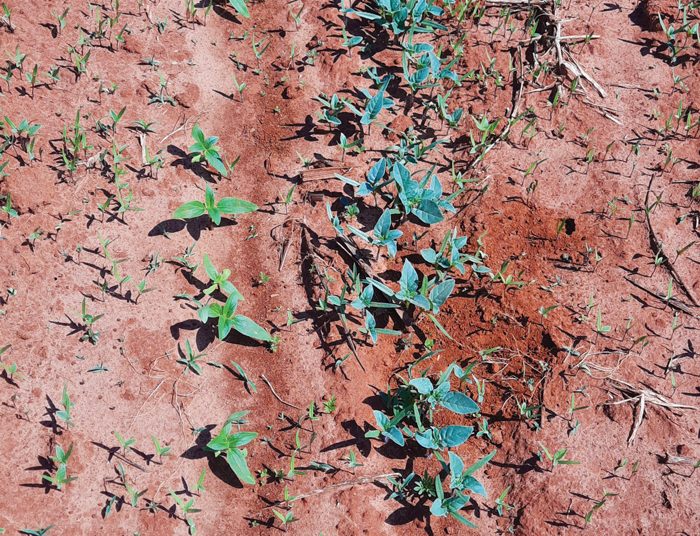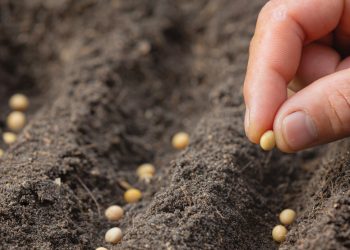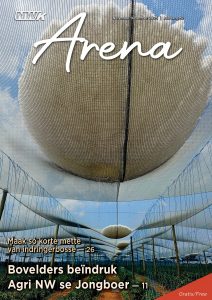
Fertilisation is one of the practices used to boost productivity and the competitiveness of crops against weeds and other environmental elements. Fertiliser placement is an integral part of efficient crop management.
Correct placement often improves the efficiency by which plants take up nutrients and consequently encourages maximum yields in agronomic crops.
Soil is a natural body of finely divided rocks, minerals and organic matter. Sand, silt, clay and organic matter help provide tilth, necessary aeration and favourable water absorption, but they seldom maintain adequate plant food to sustain continuous healthy crop growth. Fertilisers replace the nutrients that crops remove from the soil.
Without the addition of fertilisers, crop yields and agricultural productivity would be significantly reduced. This is the reason why fertilisers are used to supplement the soil’s nutrient stocks with minerals that can be quickly absorbed and used by crops.
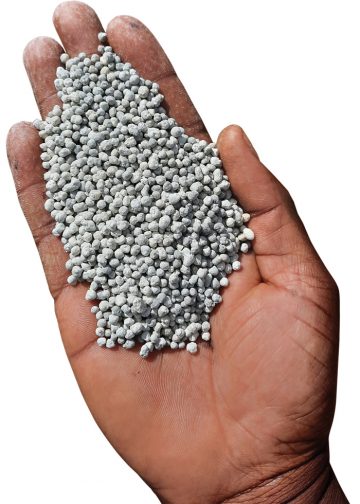
The role of fertilisers
It is very difficult to meet the demands of the increasing population with fewer resources. The loss of soil fertility, impact of weed and lack of nutrients have resulted in a decrease in agricultural production, which has increased the importance of fertilisers in agriculture.
Fertilisers are chemical substances supplied to the crops to increase their productivity. These are used by farmers on a regular basis to increase the crop yield. It contains the essential nutrients required by the plants, including for example nitrogen, potassium and phosphorus.
Fertilisers can be important to plants in the following ways:
- It increases plants’ tolerance towards pests.
- Fertilisers improve the water-use efficiency of plants and increase root depth.
- It strengthens the straws and stalks of plants.
- It improves faster development of the root system and the formation of seeds in plants.
- Fertilisers enhance the growth of plants, which can be characterised by the green colour of the plants.
Placement
The goal of fertiliser placement is to maximise root-nutrient contact, especially in the early stages of crop and root development, without causing emergence or establishment problems. Placing fertiliser in the region that will have the highest density of fine roots, or in a location from where the fertiliser will move to this region, is needed to optimise the yield.
The placement of nutrients is an important issue in nutrient management because placement strongly influences the subsequent availability of nutrients. Improper placement can reduce the yield potential and result in an economic loss.
Provided that a soil test indicates a particular nutrient deficiency, considerations of nutrient placement involve:
- The type of fertiliser being applied.
- Tillage and crop rotation practices.
- Choice of crop.
- Access to the necessary equipment.
- Nutrient mobility in the soil.
- Soil characteristics.
COMMON FERTILISER PLACEMENT METHODS
BROADCASTING
Broadcast fertiliser application refers to a uniform distribution of material on the soil surface. When applied after planting, a broadcast application is often referred to as a top-dress application. When a broadcast application is incorporated into the soil, it is referred to as broadcast incorporated.
BANDING
Banding refers to placing nutrients below, above, on one side or on both sides of the seed or seedlings at planting. The aim of this placement method is to ensure application of specific fertiliser formulations close to seeds or plant roots to ensure high nutrient availability. Fertiliser bands should be placed at least 4 cm away from the seed and 4 cm below the seed to prevent salt damage and ammonia toxicity (see Table 3).
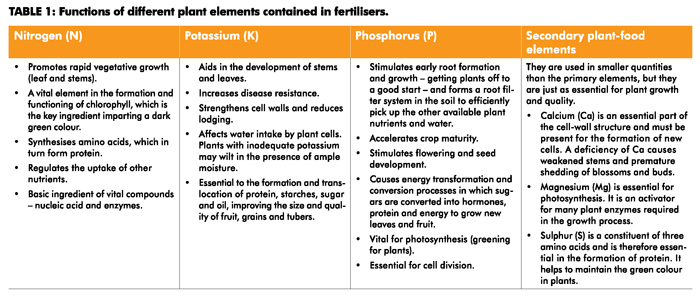

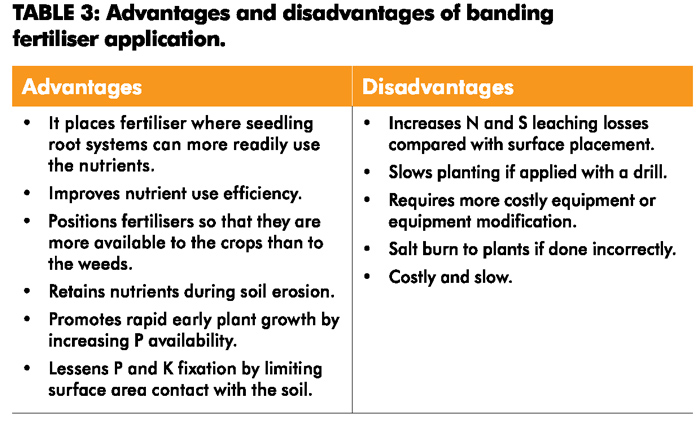 IMPACT OF FERTILISER PLACEMENT
IMPACT OF FERTILISER PLACEMENT
ROOT DEVELOPMENT
The primary root develops first, followed by the first seminal pair. Less soluble fertilisers, such as P, placed below the seed will be accessed earlier in the growing season than fertilisers placed to the side of the seed on the same depth (Figure 1). Next, seminal pairs and crown roots develop and are capable of accessing fertiliser placed to the side of the seed (Figure 2).
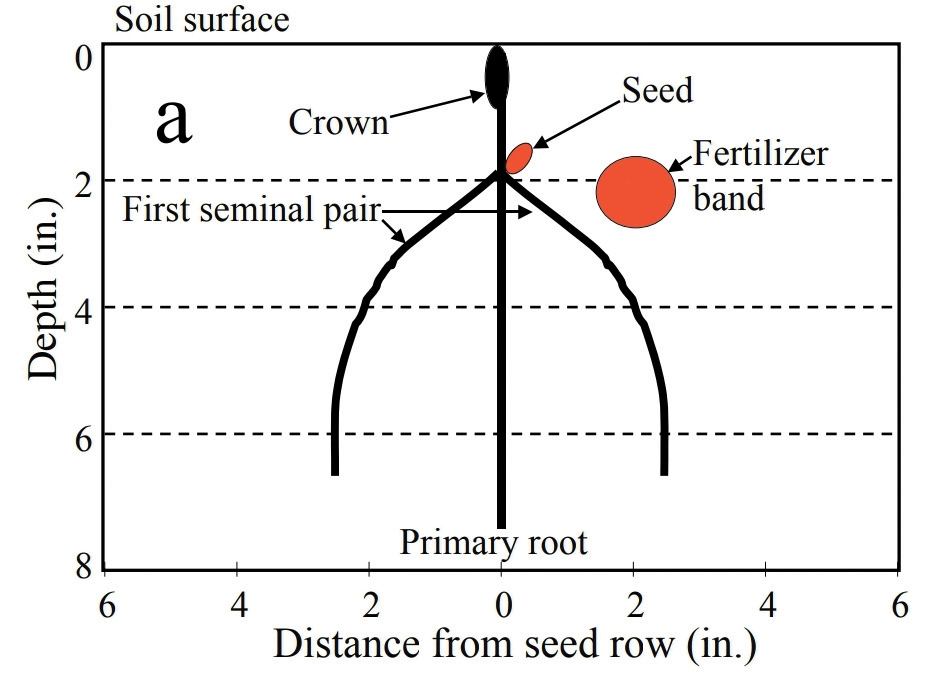
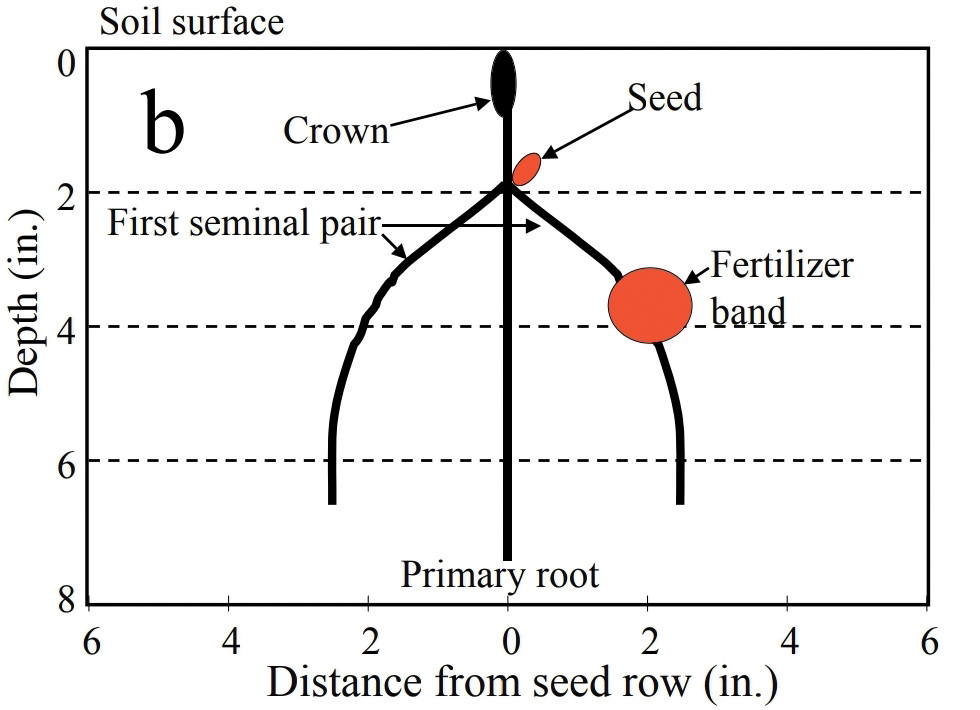
Proper band application should be 4 cm to the side and 4 cm below the seed for the developing roots to hit the banded fertiliser soon after development. Mature root systems generally grow much deeper than the depth of applied fertiliser, although the final depth is dependent on the crop and soil moisture. Deep roots can access mobile nutrients, such as nitrate, that are in fertiliser placed on or near the surface if moisture is sufficient.
FERTILISER AND WEED COMPETITION
The broadcasting of fertiliser makes the fertiliser available for weeds at a much larger scale. On the other hand, placing fertiliser in the soil near the seed or concentrated in the root zone positionally favours the crops and limits the supply to weeds. Weeds close to banded fertiliser must be controlled because the competition is more intense where nutrients are concentrated.
It is very important that planters are calibrated and monitored constantly during planting to ensure that fertiliser is still being applied at the desired depth and distance from seed. Any fertiliser that is banded incorrectly, may result in poor crop development and gives the weeds that receive it an advantage (Photo 1).
As can be observed in Photo 2 and 3, the weeds that did not receive any fertiliser continued to grow slowly in comparison to plants on the fertiliser band. If you limit the application of fertiliser to your crop, this will give it a good competitive advantage against the weeds. Improper placement of fertiliser will lead to a decline in yield of the crop and may increase the cost of weed control, which is reducing the farmer’s income.
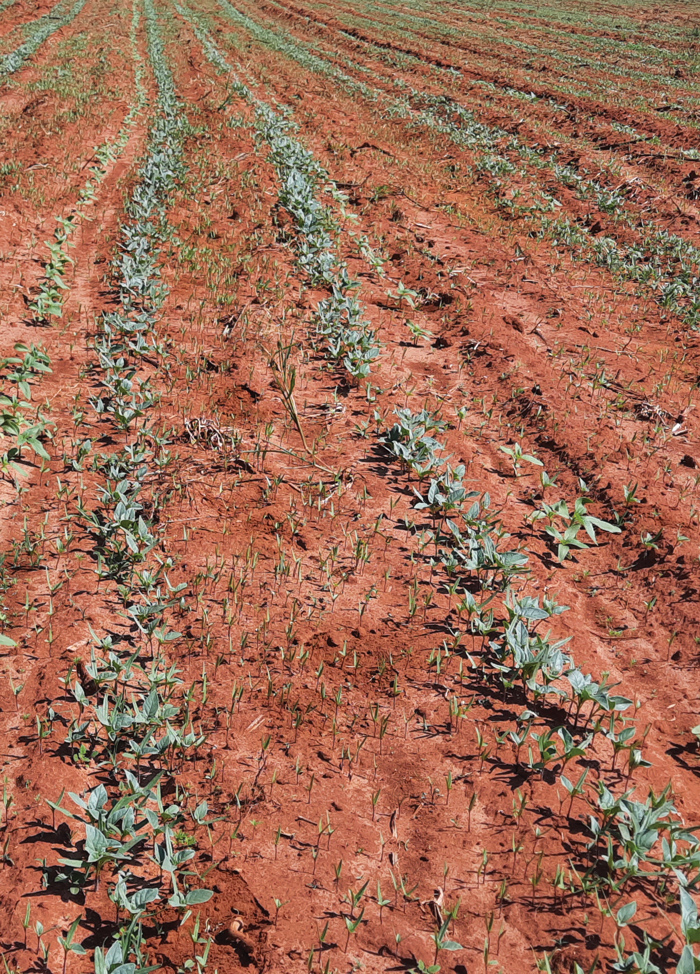
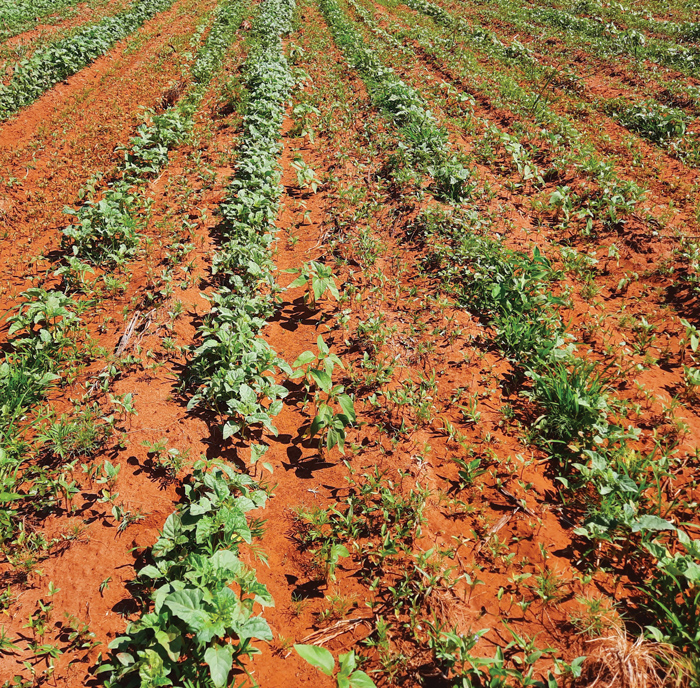
P AVAILABILITY
Choosing a fertiliser application method is an important management decision for producers, from both efficiency and environmental standpoints. Due to P being relatively immobile in the soil profile, the application distance is important in order to maximize the P uptake efficiency. P movement in water runoff causes eutrophication, which promotes algal growth in water bodies and is an increasing environmental concern.
Broadcast P application is often the simplest method and is suited for higher rates of fertiliser application. This maximises fertiliser contact with soil constituents over a larger volume of soil, thus increasing the potential for P fixation. Because of strong P adsorption to soil particles, broadcast application increases the risk of runoff to nearby rivers and streams.
Band application of P can provide many advantages over broadcast application at low soil test levels. By fertilising only a small volume of soil, soil-to-fertiliser contact is reduced, resulting in decreased P fixation and increased plant uptake.
Summary
Just because the time to plant is running out fast, there is no excuse for not checking your planter operations regularly. Any planting that occurs with fertiliser being placed on an unintended surface through uncalibrated equipment, blocked or broken tubes, will lead to a reduced yield rendering your efforts costly rather than profitable. All efforts should be made to ensure that we are feeding the crop and giving it a better chance at producing the target yield.
Fertiliser is one of the greatest expenses and its application in terms of placement should therefore be done as effectively as possible. The effective placement and timing of fertilisers can maximise both the yield and nutrient use efficiency, thereby increasing the net profit for the producer.
References
- Rees RM, Roelcke M, Li SX, Wang XQ, Li SQ, Stockdale EA, McTaggart IP, Smith KA and Richter J, 1996.
- The effect of fertiliser placement on nitrogen uptake and yield of wheat and maize in Chinese loess soils. Nutrient Cycling in Agroecosystems. 47: 81 – 91
- Sindt MR, 2015. Impact of phosphorus placement on corn rooting dynamics under long-term strip-tillage. B.S., Concordia University, Nebraska, 2015
- Steusloff TW, Nelson KA, Motavalli PP and Singh G. 2019. Fertiliser placement affects corn and nitrogen use efficiency in a clay pan soil. Agronomy Journal. 11(5):2 512 – 2 522
- https://www.ctahr.hawaii.edu/mauisoil/c_placement.aspx
- https://dutchopeners.com/
- https://www.fermofeed.com/



